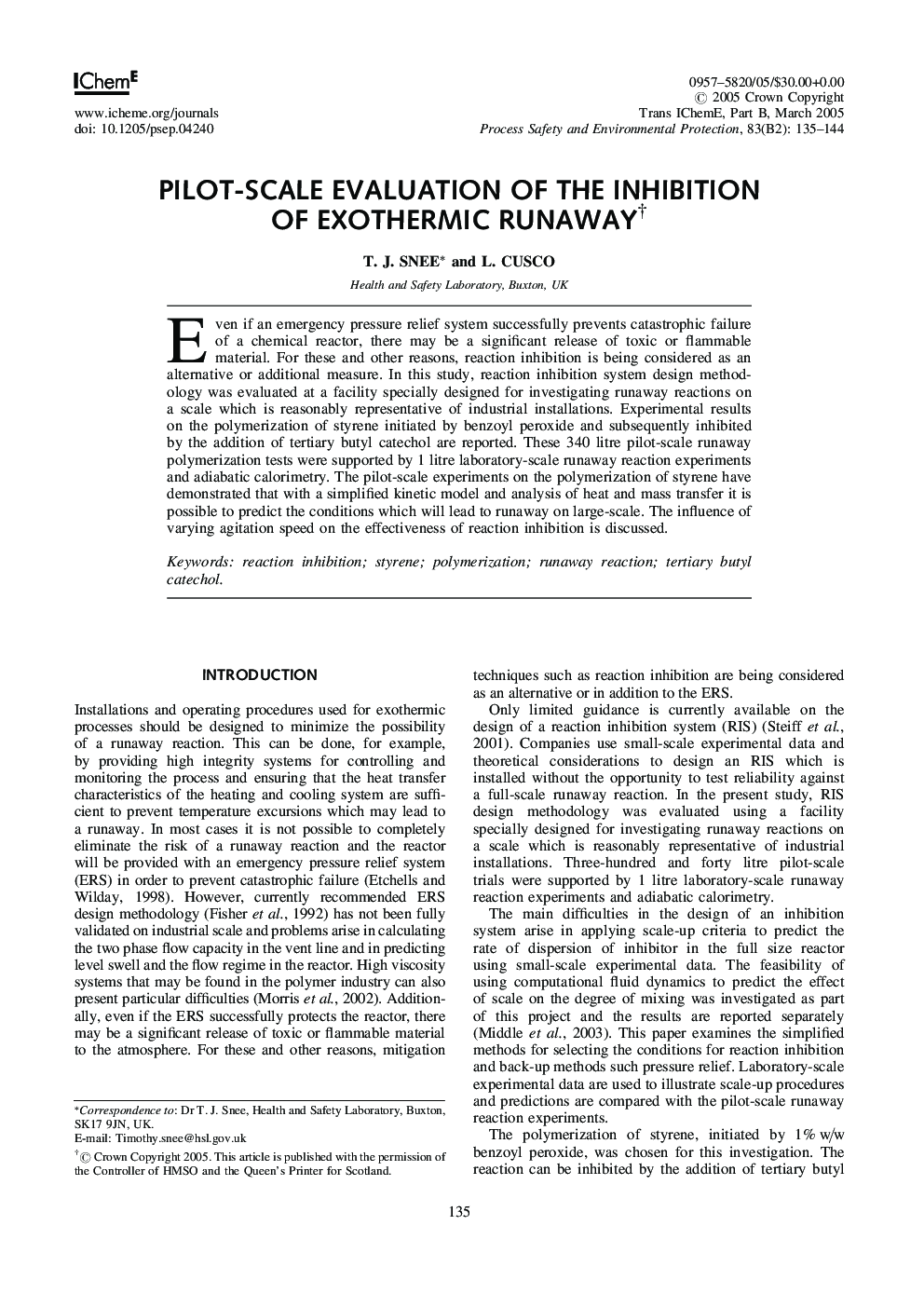| Article ID | Journal | Published Year | Pages | File Type |
|---|---|---|---|---|
| 10374041 | Process Safety and Environmental Protection | 2005 | 10 Pages |
Abstract
Even if an emergency pressure relief system successfully prevents catastrophic failure of a chemical reactor, there may be a significant release of toxic or flammable material. For these and other reasons, reaction inhibition is being considered as an alternative or additional measure. In this study, reaction inhibition system design methodology was evaluated at a facility specially designed for investigating runaway reactions on a scale which is reasonably representative of industrial installations. Experimental results on the polymerization of styrene initiated by benzoyl peroxide and subsequently inhibited by the addition of tertiary butyl catechol are reported. These 340 litre pilot-scale runaway polymerization tests were supported by 1 litre laboratory-scale runaway reaction experiments and adiabatic calorimetry. The pilot-scale experiments on the polymerization of styrene have demonstrated that with a simplified kinetic model and analysis of heat and mass transfer it is possible to predict the conditions which will lead to runaway on large-scale. The influence of varying agitation speed on the effectiveness of reaction inhibition is discussed.
Related Topics
Physical Sciences and Engineering
Chemical Engineering
Chemical Health and Safety
Authors
T.J. Snee, L. Cusco,
